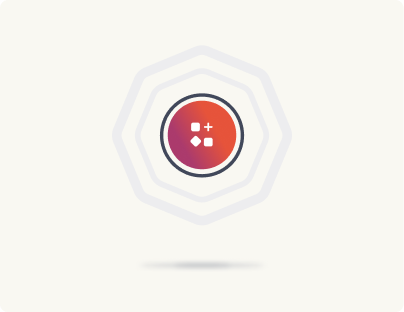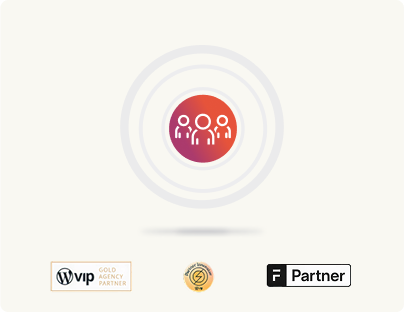Sanity to WordPress migration: Assessment & Planning
Before diving into the technical steps of migrating from Sanity to WordPress, it’s essential to conduct a thorough assessment and plan your approach. This phase lays the groundwork for a successful migration by examining your current setup, defining requirements, and mapping out how to translate your content and design effectively. This stage ensures that you fully understand your starting point and what needs to change, minimizing surprises during the migration.
Frontend assessment
The frontend/design assessment focuses on translating your current visual identity and frontend structure from Sanity to WordPress. This step ensures that your brand’s look and feel is seamlessly carried over, maintaining a consistent user experience across platforms.
Maintaining visual consistency is crucial for preserving your brand identity. During this assessment, we will:
Document your current visual identity
Begin by thoroughly documenting the design elements of your Sanity-driven frontend. Identify core design choices such as layout structure, typography, color schemes, and imagery. If a redesign or refresh is planned, note these ideas now since the design will be recreated on WordPress.
Mapping to WordPress
With your Sanity visual elements documented, evaluate how these can be translated into WordPress. Determine how Sanity’s templates, components, and UI elements like buttons, forms, and navigation map to WordPress themes, custom page templates, custom post types, layouts, and Gutenberg blocks.
Audit UI components
Conduct a detailed audit of your Sanity site’s user interface components. Review custom elements such as sliders, animations, and interactive features, and explore how these can be recreated or enhanced in WordPress using themes, plugins, or custom JavaScript. The aim is to maintain the integrity of your design while leveraging WordPress capabilities.
Analyze current optimization strategies
Investigate the performance optimization techniques used in your current Sanity setup such as image optimization, lazy loading, and caching. Understand how these techniques contribute to fast load times and a smooth user experience.
Plan for modularity
Modularity means designing your frontend in reusable pieces, simplifying maintenance and future updates. Evaluate how Sanity’s structure supports scalable, reusable components or patterns. Then, plan to recreate similar modular, reusable blocks and components in WordPress. Thanks to WordPress’s block editor and theme architecture, content teams can mix and match pre-built blocks to create engaging pages without heavy technical intervention.
Content and SEO Assessment
Before migrating from Sanity to WordPress, it’s crucial to ensure that all vital content is preserved and that SEO performance remains strong or even improves after the transition. This phase sets the groundwork for a smooth migration, safeguarding both your content and search visibility.
Content inventory & audit
Begin by cataloging all content stored in Sanity. This includes pages, posts, media assets, and metadata. A detailed inventory identifies each content type and its role within your site’s structure. This process often involves:
Crawling your Sanity content
Use available Sanity tools or custom scripts to generate a comprehensive list of content items, noting down their types, relationships, and metadata.
Classifying content types
Organize content into categories such as blog posts, landing pages, product pages, or author profiles. For each type, document how it fits into your site’s overall structure.
Mapping content schemas
Compare Sanity’s content models to WordPress structures. Map Sanity documents to WordPress equivalents like posts, custom post types, taxonomies, and custom fields. This mapping acts as a blueprint for migration, guiding how content will be organized in WordPress and ensuring nothing is lost in translation.
Evaluating content quality
Assess which pieces of content are current, relevant, and high-quality. Identify outdated, duplicate, or low-value content that may not need migration, merging, or updating. This step helps reduce the migration load and improves overall site quality post-migration.
SEO performance
Evaluating and preserving SEO performance is critical during migration. Before starting, establish a clear understanding of your current SEO setup in Sanity. This involves:
Establishing benchmarks
Document key SEO metrics such as organic traffic, keyword rankings, bounce rates, and page speed. Use tools like Google Analytics, Google Search Console, and SEMrush to gather baseline data. This information helps measure the impact of the migration on search visibility.
Url mapping & redirects
Create a strategy for preserving existing URL structures when moving content to WordPress. Plan how to set up 301 redirects for any URLs that change during the migration to prevent broken links and preserve SEO equity. This might include:
- Mapping existing Sanity URLs to their new WordPress counterparts.
- Documenting which URLs require permanent redirects.
Metadata transfer
Ensure that on-page SEO elements such as title tags, meta descriptions, headings, and alt text are accurately carried over to WordPress. This may involve:
- Extracting metadata from Sanity using available APIs or scraping tools.
- Reviewing and updating metadata to align with current SEO best practices.
- Preparing metadata for bulk upload into WordPress using SEO plugins like Yoast SEO or Rank Math.
SEO performance benchmarking
Plan how to monitor SEO performance after migration by setting benchmarks for post-migration comparison. Track metrics over time to catch any declines or improvements in organic search performance, using established SEO tools to measure changes.
By thoroughly conducting a content inventory and audit alongside a detailed SEO performance evaluation, you set a strong foundation. This ensures that during the migration, critical content is preserved, and structured appropriately in WordPress, and SEO value is maintained, enabling a seamless transition with minimal disruption to search visibility and user experience.
Backend assessment
The backend assessment involves evaluating your Sanity setup’s features, workflows, and integrations to ensure a smooth migration to WordPress while maintaining full functionality.
Functionality assessment
Start by identifying the key custom features, content models, and integrations used in your Sanity setup. This involves:
Identifying core Sanity features
Examine how your enterprise uses Sanity for instance, for structured content, asset management, personalization, or multilingual support. Pinpointing these features is crucial, as functionalities such as media handling or complex content structures need replication in WordPress.
Listing essential functionalities
Create a comprehensive list of the features to be migrated, such as:
- Custom content types and schemas
- Unique fields, blocks, and components
- Custom workflows for content creation, approval, or publishing
- Media and asset management integrations
Mapping to WordPress
Determine how to recreate these features in WordPress. This may involve:
- Setting up custom post types, taxonomies, and fields using WordPress native functions or plugins like Advanced Custom Fields.
- Developing custom plugins or writing custom code to replicate unique Sanity behaviors not available out of the box.
- Documenting the purpose of each feature, user roles that interact with it, and any dependencies on third-party integrations.
This detailed mapping creates a blueprint for replicating Sanity’s capabilities in WordPress, ensuring that critical functions continue to operate seamlessly post-migration.
Integrations & workflow assessment
Next, review and plan the migration of integrations and workflows:
Evaluating third-party integrations
List all external systems integrated with Sanity such as CRMs, analytics tools, marketing platforms, payment gateways, etc. For each integration:
- Determine if WordPress offers existing plugins or native support to replicate the integration.
- Assess the level of customization required to adapt these integrations to WordPress.
- Plan how data will flow between WordPress and these third-party systems, considering APIs, middleware, or custom layers.
- Evaluate performance implications and implement necessary security measures (authentication, encryption, GDPR compliance).
Analyzing workflows
Catalog all custom and default workflows in your Sanity setup, including task sequences, approval stages, triggers, and notifications. For each workflow:
- Identify optimization opportunities.
- Determine if it can be replicated using WordPress’s built-in features, editorial plugins (like Edit Flow or PublishPress), or if custom development is necessary.
- Define how workflows will trigger in WordPress (e.g., on content submission or status change) and document the equivalent logic using WordPress hooks, plugins, or custom scripts.
- Create process maps or flowcharts to visually represent these workflows, ensuring no critical steps are overlooked.
By the end of the backend assessment, you’ll have a detailed blueprint outlining how to recreate all essential Sanity features, integrations, and workflows in WordPress. This comprehensive plan will guide your development efforts, ensuring a complete and smooth transition that maintains your enterprise’s functionality and performance.







